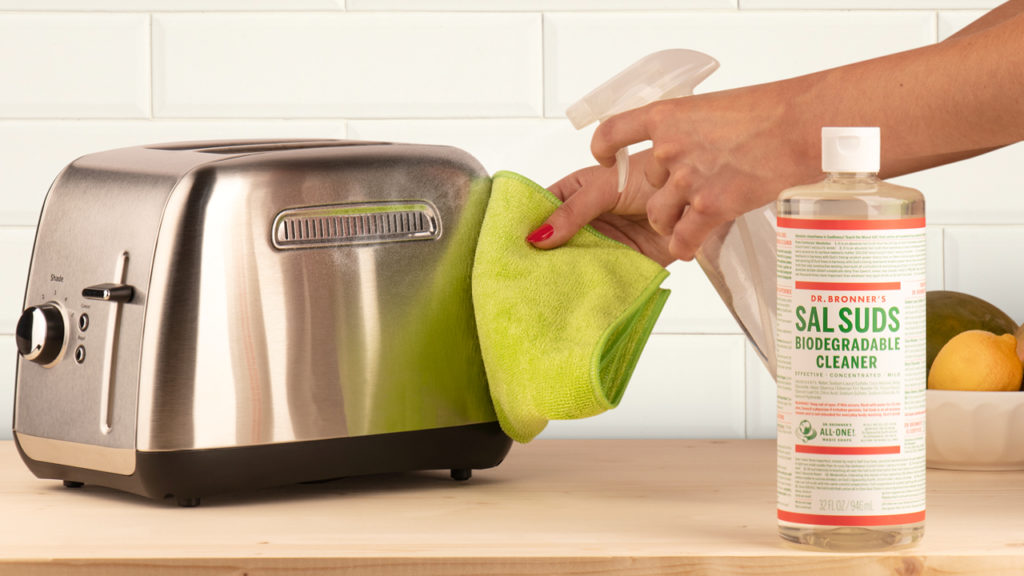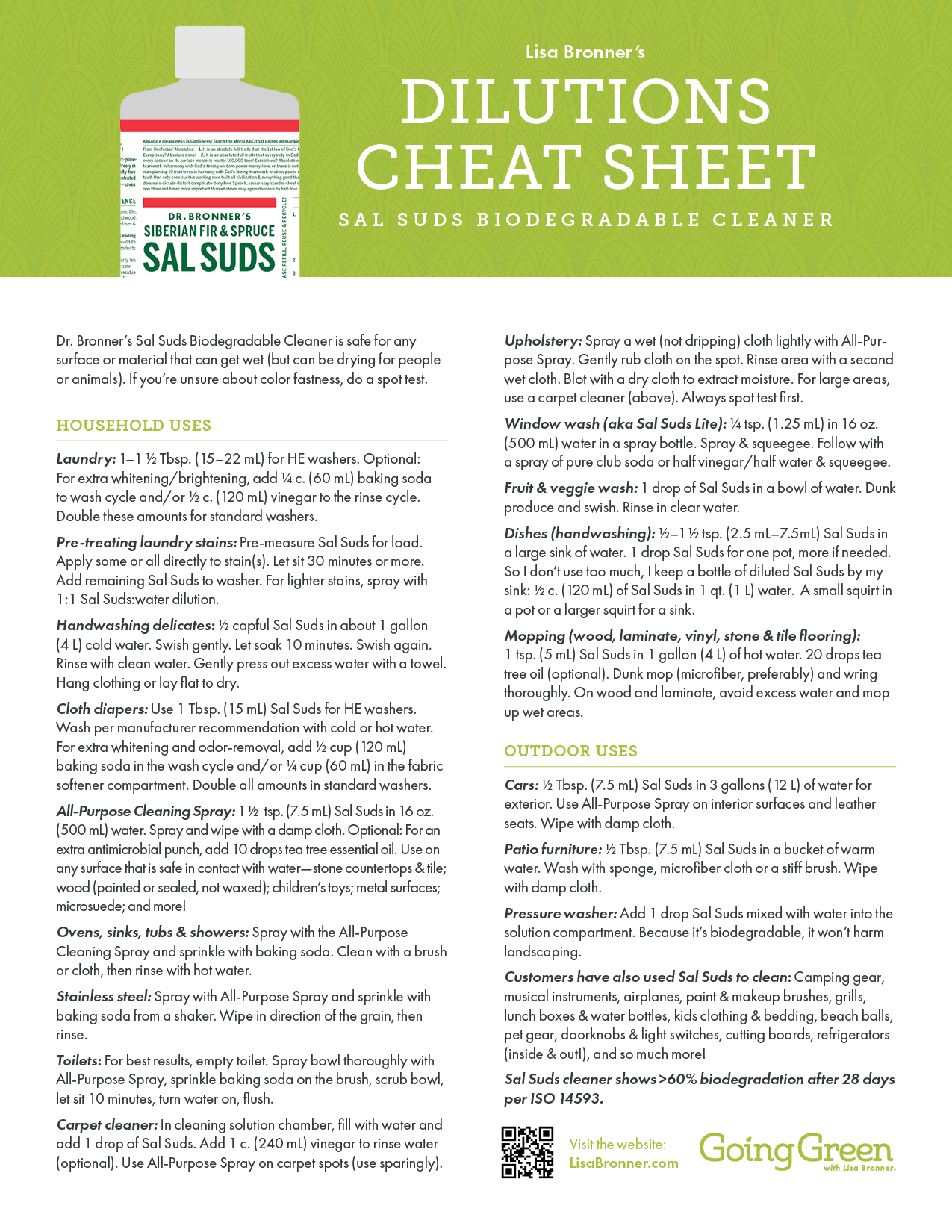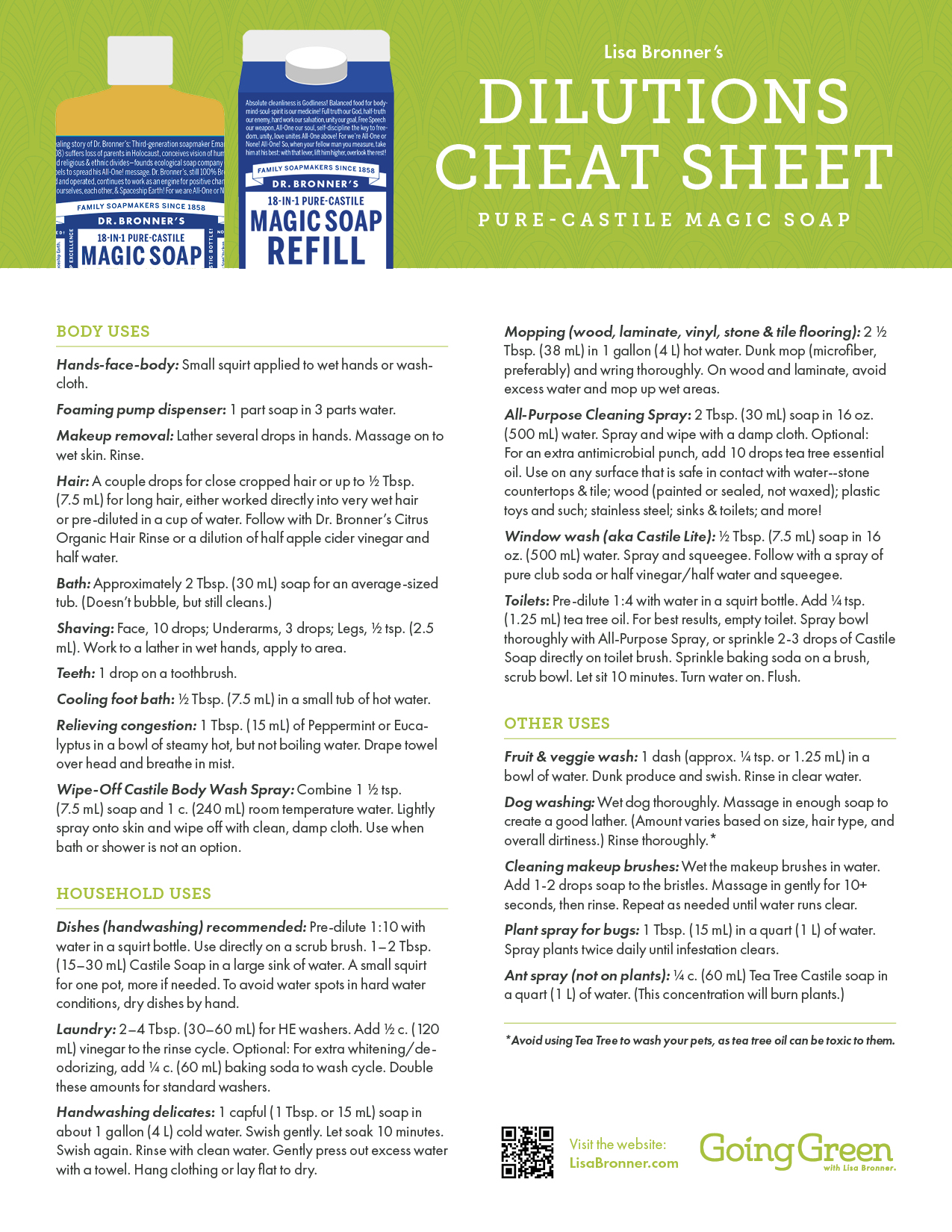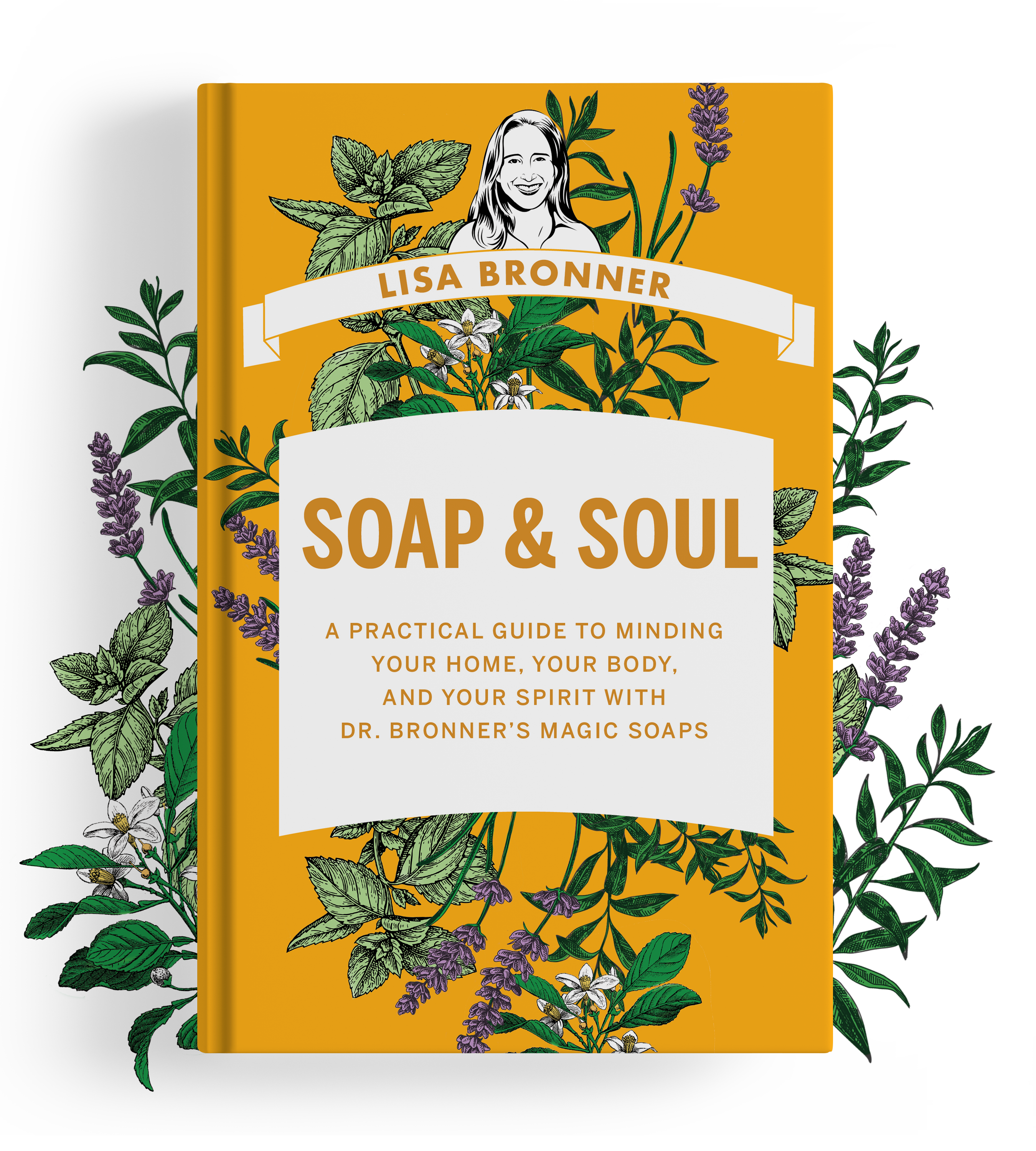
I used to be able to tell who had raided the fridge by the height and size of the handprints on the brushed stainless steel door. Now that the kids are older – and, more relevantly, taller – and generally better at using the door handle, I’ve lost my key detective trick. It is the proclivity of brushed stainless steel to reveal any and all fingerprints that had given me my seeming omniscience.
Brushed stainless looks fantastic when it’s clean. It adds a bright and professional air to the kitchen. But it is quite unforgiving when it comes to hand oils, water spots, cooking splatters, and other residues. It conceals nothing.
Stainless steel, which is an alloy of iron, chromium, and other metals, gets its brushed look by being polished with a moderate grit belt or wheel. This gives it a subtle luster instead of the bright shine of unbrushed stainless, as well as a directionality, or grain. Though the surface feels smooth to our hand, it is in fact finely grooved. These grooves are what hold on to grease and other debris so very well. Too well, in the opinion of those who aim to keep it clean. However, caring for stainless steel does not take extra work or elbow grease. In fact, it doesn’t even take products specifically marketed to stainless steel, though there are many.
For starters, why buy a separate product if there’s one concentrated product that cleans multiple surfaces? What you need is a product that is effective at picking up all grime and leaving no residue. Having fewer bottles reduces plastic waste, saves you money, and takes up less space in your cabinets. Plus, many products marketed for stainless are filled with petroleum derivatives, artificial fragrances, and other problems like the carcinogenic 1,4Dioxane. These are not what we need surrounding us.
What cleaning brushed stainless takes is a little understanding and strategy. Before you do anything, consult manufacturer’s instructions, which are always a wise place to start, especially as it comes to maintaining warranties.
How to clean brushed stainless steel
- Wait to clean the surface when the device is cool. I’m thinking particularly of stovetops, ovens, toasters, and the like. This is partially for your safety and partially for your sanity. When stainless is hot, it’s like washing a car in full sun: the water will evaporate before you have a chance to wipe it and leave behind soap and mineral deposits. That’s nothing but frustrating.
- Use a soft damp cloth to clean. I’m partial to microfiber* because it is exceedingly absorbent, lint-free, and reusable. This is not the place for steel wool, stiff brushes, plastic scrubbies, or even abrasive sponges. You’ll also want an ultra-absorbent cloth to dry – again, I go for the microfiber.
- Regardless of which of the following cleaning methods you employ, wipe in the direction of the grain. The grain you see is composed of those fine grooves I mentioned above. Keeping your strokes in the direction of the grain is more effective at cleaning them out and doesn’t fight the appearance of the surface directionality.
- For light cleaning, when there’s merely dust and a few fingerprints – Spray a vinegar solution of half white vinegar/half water and wipe with your damp cloth.
- For moderate cleaning, when there’s many fingerprints and a bit of light cooking residue – Spray one of the following All-Purpose Sprays and wipe with a comfortably hot, damp cloth:
- Dr. Bronner’s Castile All-Purpose Spray: 1/4 c. (60 mL) Castile Magic Soap in 1 qt. (1 L) water
- Sal Suds All-Purpose Spray: 1 Tbsp. (15 mL) Sal Suds in 1 qt. (1 L) water
- For heavy cleaning, when facing stubborn, baked-on cooking residues on stovetops, try one of these techniques, in order of increasing intensity:
- Lay a very hot (careful not to burn yourself) wet cloth over the grime and let it sit til cool. See if it wipes off more easily.
- Use baking soda, which adds a very gentle scrub and is not sharp enough to scratch stainless. Sprinkle the powder lightly on your rag and rub gently in the direction of the grain.
- For the toughest grime, make a thin paste with baking soda and Dr. Bronner’s Magic Soap or Sal Suds. Spread this on the crud, let it sit for 10 minutes, wipe off and rinse.
- Stainless steel sinks also benefit from a soap and water wash, with a sprinkle of baking soda to restore its luster.
- Rinse all cleaning agents – be it vinegar, soap, or baking soda – off your brushed stainless with a damp cloth. Residues will show.
- Dry the surface thoroughly with a dry cloth. Continue to wipe in the direction of the grain until completely dry. Dried water spots or lines will mar the shine afterwards. Air drying is stopping short of the high shine finish line. Be sure to dry completely with your cloth.
What to avoid with stainless
- Abrasive cleaners such as scouring powders or anything with a scouring agent.
- Abrasive tools such as steel wool, stiff brushes, plastic scrubbies, or rough sponges.
- Cleaners that leave residues. They will show, even if you dry them. Use clean rinsing products only.
- Bleach, and any cleaner containing bleach – The chloride ions in bleach, whose chemical name is sodium hypochlorite, can accumulate in the grooves of the surface, breaking down the chromium oxide of the steel, resulting over time in corrosion.
- Salt – For two reasons, salt is bad for stainless steel. Dry salt is an abrasive that will scratch the surface. But even if the salt is dissolved in water, the chloride ions (salt = sodium chloride) can corrode the surface in the same manner as bleach.
With these tips in mind, I wish you and your brushed stainless many long and happy years together of mutual aid and comfort.
*There is concern regarding microfiber shedding non-biodegradable nanoparticles during washing. This is why I recommend using the GuppyFriend for the first eight washings. After this point, research shows that fibers no longer shed. Considering I have owned my current set of microfiber clothes easily for 7 years, using and washing them weekly, they are well beyond the point of shedding and by far are the most sustainable and effective choice.
Further reading
- How to Clean Your Fridge Inside & Out
- 13 Essential Green Cleaning Ingredients
- GIY All-Purpose Cleaning Spray
Sal Suds cleaner shows >60% biodegradation after 28 days per ISO 14593.
This use and many more are in my book, Soap & Soul: A Practical Guide to Minding Your Home, Your Body, and Your Spirit with Dr. Bronner’s Magic Soaps, available now in hardback on DrBronner.com or at your favorite bookseller, and as an eBook and audiobook (read by me!) from wherever you download or listen.





How can I clean tea stains in my stainless steel reusable bottle?
Hi Kathy- I’ve heard Oxyclean tackles this. Oxyclean is washing soda and hydrogen peroxide, functionally. Hydrogen peroxide alone may clean it. Another option is to scour with a paste of baking soda and either Sal Suds or Castile Soap.
Thank you for your very valuable advice , it helped me a lot. 🥰👍👍👍
Enjoy the peppermint hand sanitizer.
Thank you for the Cleaning advice!
I did not know that this product would do so much!
How would I go about cleaning a Stainless Fridge and dishwasher ? Thanks
Hi Sandra- Mix up a bottle of All-Purpose Cleaning Spray, with 1/4 c. of your favorite Castile soap OR 1 Tbsp. Sal Suds and 1 qt. of water. Spray the surface and wipe with a damp microfiber cloth. Wiping in the direction of the fine grain in the stainless steel is most effective and leaves surfaces shiny.
Thanks for the link to GuppyFriend and the info about the microfiber cloths – the shedding was something that worried me, but it is good to know that it is only temporary and the effects can be mitigated.
I have water lines on my stainless dishwasher that won’t come off with any method. Would love suggestions to get rid of them!
Hi Rachael- From the sound of it, those may from hard water. A spray of half water and half vinegar should clean those up. Take care to wipe in the direction of the grain. However, if it’s any kind of etching, vinegar won’t rectify them.
Lisa’s articles are always so helpful! As a reluctant bachelor regarding all things “kitchen,” Lisa gives me hope!
So glad to know I’ve helped, David!